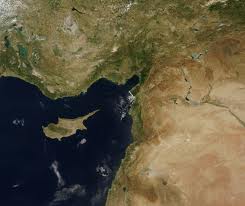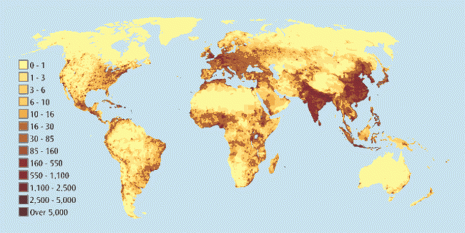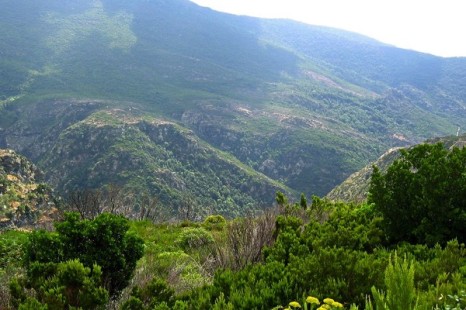
By Enrique Lescure
Introduction
Not since the days of the Cold War have we been as close to a direct military confrontation between Russia and the West (represented by NATO) as today. The 2015.11.24 Incident I refer to is of course the event when two Turkish F16 planes downed a Russian Su-24. The graveness of the situation is accentuated by the fact that one of the two Su-24 pilots was killed by Syrian rebels when he landed (which directly contradicts the Turkish claims that the plane was violating Turkish air-space).
Theoretically, Russia could choose to respond in line, thereby activating Article 5 of the North Atlantic Treaty, stipulating that if one NATO member is attacked by a non-NATO member, the other members of NATO have a collective responsibility to defend the attacked party.
Major wars have been initiated by minor incidents like these before. The First World war began due to the murder of the Austro-Hungarian heir. The Second World war ignited because of the status of a League of Nations-administered city on the Baltic Sea coast.
This is indeed a very dangerous situation. In order to understand what will most likely happen, we must understand the likely reason why this happened now, what the motivations are (since I as a political scientist strongly suspect that this was deliberate) and what the various actors hope to achieve.
TL;DR summary
- Turkey and Russia have almost always since the 16th century, bar from a period during the 20th century, had competing geopolitical interests.
- Syria, a heterogeneous powderkeg located between Turkey, Iran and Saudi Arabia, has almost always been a region of contention between empires.
- Russia is ultimately in a status of partial recovery from the hiatus of the 1990’s, while Turkey is an emergent great power.
- Both Russia and Turkey are governed by de-facto autocrats who are partially building their legitimacy on a strongman image.
- Russia and the West have supported different sides in the Syrian Civil War since it began.
- The Bataclan terror attack in Paris has led to an increased pressure for West European powers to respond to the Islamic State, leading to talks with Moscow.
- The 15.11.24 incident is ultimately an attempt by Turkey to prevent the emergence of a NATO-Russia consensus on the Syrian Civil War.
Background

The Zaparozhye Cossacks Writing a Mocking Letter to the Turkish Sultan *oil on canvas *358 × 203 cm *signed b.c.: И.Репин 1880-91
The Ottoman Empire, the precursor to the modern Turkish state, and the Moscow Tsardom, the precursor of the various incarnations of the modern Russian state, both emerged during the late 15th century as players in the eastern European periphery, the first one controlling the south-east corner and the second one the north-east corner.
Russia emerged in a state of constant conflict with Turko-Mongol khanates located on the steppes, crushing the Golden Horde and two of its three successor states – the Astrakhan and Kazan khanates.
The third successor state, the Crimean Khanate, was kept in suspended animation by becoming an Ottoman vassal state. With the support of their powerful backer in Constantinople, the Crimean Tartars managed to survive until 1783, when Catherine the Great abolished the Khanate and annexed it to Russia, initiating a colonisation of Crimea with ethnic Russians.
The accession of Crimea to Russia ended the phase when Turkey played offensively. During the 19th century, Russia made inroads in Central Asia, the Caucasus region and the Balkans, contributing to the liberation of Serbia, Romania, Bulgaria and Greece, and waging several large-scale wars against the Ottoman Empire.
In 1914 – 1924, following the re-ordering of the world after WW1, the Ottoman Empire collapsed, and the Orthodox Russian Empire was replaced with the Marxist-Leninist Soviet Union, which re-oriented the geopolitical aims of Russia west instead of south.
Turkey found itself as a minor player in the Mediterranean and Middle Eastern regions, desperately oriented towards western powers in order to modernise the country’s military and economy. With the exception of the 1974 intervention in Cyprus, Turkey has pursued a defensive policy engaged to the European sphere.
During the early 2000’s, the fall of the Soviet Union combined with the ascent of the moderately islamistic AKP, spelled room for a reorientation of Turkey’s geopolitical ambitions. Increasingly clear that Turkey would not become a part of the European Union within a foreseeable future (because of resistance from continental powers like France, Italy and Belgium), Turkey instead increasingly came to increase its diplomatic presence in the Middle East, trying to use its status as one of the strongest economies in the region as a way to increase its influence in the Middle East.
For a long while, Erdogan – then prime minister – moved towards improving the relations between Turkey and Iran, as well as the emerging Iranian sphere, partially helped by the 2006 Litani War between Hezbollah and Israel. This closeness between Iran, Syria and Turkey even involved joint military exercises.
All this, of course, was changed by the Arab Spring in 2011…
The Syrian Quagmire

The Syrian Civil War began in earnest because Syria’s dictator, Bashar al-Assad, instead of negotiating with the protesters demanding democratic elections and reforms in 2011, decided to use force to scare people from protesting – evocating the memory of his late father Hafez al-Assad, who instigated the 1982 Hama Massacre, leaving possibly 20 000 people dead.
While Bashar al-Assad has failed to keep large swathes of Syria to slide out of the grip of the Ba’ath Party, he has managed to keep the Syrian state intact, partially because of the fragmented ethnic and sectarian build-up of Syrian society, where the dictator belongs to a sectarian minority – the Alawites – who predominatly can be found in western Syria. As the Syrian rebellion took on more and more ethnic, religious and sectarian traits, the groups that would be grimly affected under the rule of a more theocratic Sunnite-dominated Syria came to coalesce around the regime, in either outright collaboration or friendly cooperative neutrality.
Internationally, Syria is at the centre of a Cold War between three regional powers, Iran, Turkey and Saudi Arabia. Traditionally, Syria has also enjoyed good relations with Russia since Russia still was the Soviet Union. The West, having seen an opportunity to get rid of a regime which is both extremely brutal and opposed to the 1979 Camp David peace accords between the Arab World and Israel, also involved, albeit half-heartedly.
In 2013, Russia and the West for the first time confronted one another about Syria, followed the Ghouta Gas Attack, with both parties sending fleets to the Eastern Mediterranean – covered in an earlier post at the EOS Horizon. I already back then warned that if the situation allows to continue with both sides increasing their support for the warring factions, it can escalate until the Syrian Civil War triggers a larger war.
In late 2015, Russia became the first non-regional actor to directly intervene in Syria, officially to strike at the Islamic State positions inside Syria, but de-facto attacking other rebel groups, some of which are supported by the West, Turkey, the GCC, or all of these actors. In fact, Russia’s strikes have been mostly directed against rebel positions near the al-Nusra-controlled city of Idlib in Syria.
One should however remember, that al-Nusra is a part of al-Qaeda, a group reminiscent… or rather nearly identical to the Islamic State in ideology/theology. In fact, the Islamic State was born due to a split with al-Qaeda, regarding conflicts over Syrian oil wells.
The role of the Bataclan Tragedy

The Russian intervention which began the 30th of September 2015 after a formal request of the Syrian regime, already had changed the playing field. It had virtually ensured that no outside force would intervene against the Ba’ath dictatorship, and also changed the frame of the Geneva peace talks, where the Western line was that for a peace treaty to emerge, Bashar al-Assad had to resign as president, while Russia wanted to seek an arrangement where their influence in Syria would be preserved, seeing the continuation – at least for a few years – of al-Assad, as a precondition for this.
Following the Russian intervention, the West signalled – slowly – that it was ready to accept that al-Assad resigned later. Russia also signalled their willingness to compromise, stating that they did not seek to keep al-Assad in power but to “defend the sovereignty of the Syrian people in the choice of their leader”.
This trend started to marginalise Turkey, which has tacitly approved – during the course of the civil war – the growth of the Islamic State, and consistently seen Syrian and Iraqi Kurds as a greater menace than the Islamic State. Turkey has also stepped up as a patron of groups of rebels in northern Syria.
However, Turkey has not played a significant role as an actor in the Geneva talks between the West, Russia and Iran, and was thus already then marginalised.
The Bataclan tragedy in Paris, which left 130 dead and has shocked the European Union, has led to increased calls from the French government regarding a joint Western European intervention against the Islamic State.
The Russian leader, Vladimir Putin, has used this opportunity to call for a collaboration between the Russian and Western interventions in Syria, partially to help drag West further towards the Russian position in the Geneva talks, and to set pressure on the continental powers to reduce the Crimea/Donbass sanctions against the Russian economy.
In fact, a meeting is planned to occur between Hollande and Putin in this week to discuss a joint strategy against the Islamic State.
The Batman Gambit of Erdogan

No, I am not referring to the Turkish city of Batman, but to a Batman Gambit. That is a TV tropes reference to a strategic plan which for its success demands that all actors act in a manner consistent with that the machinator of the plan originally has envisioned.
It can of course be a genuine incident, the 15.11.24 incident that is. But that it happens so close to a major potential reapproachment between Europe and Russia talks against it, especially since the Turkish regime does not want to be further marginalised from the Syrian theatre.
Thus, Turkey has done the unthinkable. It has downed a Russian Su-24. It has downed a Su-24 of a nuclear weapons-equipped state with inter-continental ballistic missiles.
If the Turkish military did – as I suspect – this intentionally, the purpose would be to mar the talks between Hollande and Putin, most likely by provoking a Russian counter-reaction which can lead to a minor conventional military conflict between Russia and Turkey. Since Turkey is a member of NATO, this would effectively then prevent the reapproachment between West and Russia, and serve to help Turkey keep some of its influence in northern Syria.
The problem of course is, what if Putin chooses to ignore this?
What will happen?

Vladimir Putin has a popular image amongst both his admirers and detractors as a warlike macho leader. What we tend to forget however, is his background within the Soviet Intelligence Network – largely still the same people which surrounds him. Thus, the Russian regime does not think in terms of tankie philosophy but in terms of blocking western incursions into the Russian interest sphere, by freezing conflicts, and then try to gain or keep influence outside the Russian sphere. The important thing is not military bravado, rather it is considered a measure of last resort.
In fact, the 15.11.24 incident can be utilized by Putin to further marginalise Turkey within NATO, and to speed on the Euro-Russian alliance against the Islamic State, which is contrary to what the original intention of the idea to down a Russian Su-24 was aimed to achieve.
So, most likely, we will see at least a symbolic number of French and other West European jets being allowed into Syria, either from the Charles the Gaulle Aircraft Carrier, or by using the Russian airbase in Syria. If this cooperation becomes formal, then Turkey would not be able to shoot down another Russian plane without becoming even further marginalised than it already is.
There is however a wildcard.
If there is a risk that this incident was approved by the United States, that means that the situation gets more complicated. That could mean that the US could exert pressure on France to not cooperate with Russia in Syrian air-space, leading to an increased risk for “incidents” to occur.
What ought to happen

The Ba’ath Regime in Syria is truly reprehensible, as is the Islamic State and many of the internationally backed rebel organisations. However, it is clear that the competing geopolitical aims of major powers until now have served to not only keeping this conflict hot, but also to gradually escalate it, contributing to the partial collapse of Iraq, the destabilization of Lebanese internal politics, and the current refugee crisis in parts of Europe.
Therefore, it is absolutely essential that the war is stopped at this point. It can either be stopped by an intervention from a foreign power, or through a peace accord.
It is doubtful if Russia has the capacity to be that foreign power, and an intervention of the opposing side could lead to a major global conflict.
A peace accord however is possible, and there is only one major source of  contention, namely the role of one man – Bashar al-Assad. If he doesn’t resign, neither the opposition nor the West wants to accept a peace treaty. If the west doesn’t drop its demand that the president resigns, then Russia and their allies refuse to accept a peace treaty.
contention, namely the role of one man – Bashar al-Assad. If he doesn’t resign, neither the opposition nor the West wants to accept a peace treaty. If the west doesn’t drop its demand that the president resigns, then Russia and their allies refuse to accept a peace treaty.
Ultimately, the issue of Bashar al-Assad has to be removed from the table, either by his resignation or the resignation of the demands that he resigns. If and when that occurs, it will not spell the end of the War in Syria, since there – apart from the Islamic State – are hundreds of rebel groups that do not comprise the official Syrian opposition. If there is a peace treaty signed in March 2016, large-scale hostilities can (and probably will) still continue for several years, even after the inevitable destruction of the Islamic State.
Nevertheless, what must be done is to prevent an escalation of the war to a regional or global conflagration. Therefore, it would maybe – despite the 15.11.24 incident – be prudent to include Turkey in the peace talks. Either that, or Turkey must be completely relegated away from Syria as an actor.
No war will continue forever, even the Hundred Years War had to stop. The sooner we stop the Syrian Civil War however, the better for the world.
We need to focus on the global ecological threats, rather than on silly geopolitical issues that needlessly serve to kill hundreds of thousands.







































 contention, namely the role of one man – Bashar al-Assad. If he doesn’t resign, neither the opposition nor the West wants to accept a peace treaty. If the west doesn’t drop its demand that the president resigns, then Russia and their allies refuse to accept a peace treaty.
contention, namely the role of one man – Bashar al-Assad. If he doesn’t resign, neither the opposition nor the West wants to accept a peace treaty. If the west doesn’t drop its demand that the president resigns, then Russia and their allies refuse to accept a peace treaty.






















